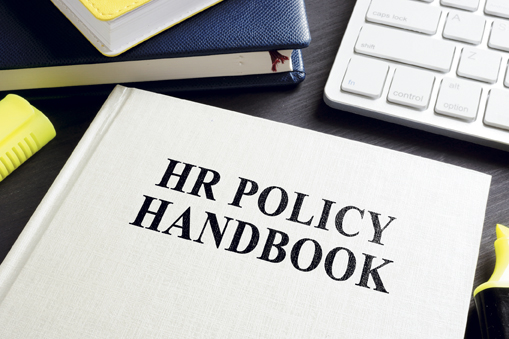The Innovative Workplace
By Larry Dunivan
REDUCING PEOPLE RISKS IN THE WORKPLACE
Why should you implement a people risk management strategy?
People risk management can provide important support to an organization’s culture, enhancing employee engagement through the effective application of risk management strategies.
More than ever before, HR and business leaders today are focused on people and culture. This emphasis offers organizations many benefits, but effective management of issues related to people also represents a real risk to every business. In spite of the risks, the everyday priorities of running a business may distract management from exploring affordable, easily accessible tools and resources to manage people risk—thus the need for a new approach that solves the problem: people risk management (PRM).
The HR function has evolved significantly over the past several decades. Historically, HR departments focused primarily on operational tasks. The 21st century brought changes to the HR function, which began taking on a more strategic role, including helping drive critical HR-related business decisions (such as workforce optimization and talent management).
In recent years HR has evolved once again, this time to focus more on people and culture (in fact, many HR departments are renaming the function “People and Culture”).
Most organizations today realize the importance of a strong culture and high employee engagement because they contribute to superior performance as well as retention of top talent.
For example, Gallup research has found that 40% of employees strongly agree that the mission of their company makes their job feel important.
Companies that double that number can realize:
- 41% reduction in absenteeism
- 33% improvement in quality
- 50% fewer safety incidents
For Millenials, knowing what the organization stands for and what sets it apart from the competition is important. More than seven of ten who strongly agree that they know this information say they plan to stay with the company for at least one year. Just 30% who “strongly disagree” that they knowthis information say they expect to stay for that long.
Bottom line: Clearly communicating mission is important if you want a productive and safe workforce that will stay around.
Drivers of employee engagement
We understand the importance of a strong workplace culture and high employee engagement, but how do organizations achieve those goals? Based on decades of research, Gallup has identified the following five drivers of culture and engagement:
Leadership and communication. Actions speak louder than words, and leadership must embody company culture to build trust throughout the organization and foster employee engagement.
Values and rituals. Organizations must not stop at just communicating their values and rituals, but also put them into practice. This is an area where many businesses fall short: Only 23% of employees strongly agree that they can apply their organization’s values to their daily work.
Human capital. Many organizations fail to implement culture throughout the entire employee life cycle, sending a disjointed message to employees from onboarding to development to promotion. When an organization is values based, employees buy in and come along on the engagement journey.
Work teams and structures. Internal processes and structures should reflect an organization’s desired culture, but often businesses keep doing what has been done in the past rather than creating an organizational structure with culture in mind.
Performance. Performance management practices, including goal setting, key performance indicators, and incentives, should support an organization’s stated culture and purpose. Misalignment creates confusion among employees and diminishes engagement.
The shift in focus to people and culture can produce many benefits. It also carries significant risks—risks that employee behavior could be an impediment to organizational success.
These people risks are twofold:
Negative impact on engagement scores. Maintaining a strong culture and high employee engagement isn’t a one-time task. Organizations must continually work to uphold that culture and keep people engaged. People risk management can provide important support to an organization’s culture, enhancing employee engagement through the effective application of risk management strategies.
Compliance risk. Risks related to people can result in expensive litigation, fines, and even criminal punishment. Beyond the cost to the bottom line, compliance risks that are not addressed will erode employee engagement over time.
Compliance risks related to people include:
- Ineffective alignment between leadership behaviors and articulated culture principles
- Failure to comply with key operational guidelines for the administration of human resources, payroll, and benefits policies across federal, state, and local entities in which an organization does business
- Discriminatory or biased hiring practices
- Inconsistent or biased administration of compensation programs
- Inadequate health and safety guidelines and inspections
- Weak management practices for consistent supervision of employees
- Poor quality onboarding, offboarding, and trans-boarding practices
Why people risk management?
People risk is inevitable—but organizational behaviors and responses can either mitigate or accelerate that risk. The greatest challenge in managing people risk (or any risk) is anticipation.
Organizations must have the knowledge and expertise to evaluate and prepare for potential risks, as well as the resources to manage risks when they manifest. Most small and mid-sized organizations are unable to access this critical expertise affordably and on a day-to-day basis. Large organizations may invest heavily in resources to mitigate people risks, but their HR teams generally don’t have easy access to the information needed to ensure compliance at local levels.
People risk management fills a critical need for businesses of all sizes, helping them build and maintain a strong culture, drive employee engagement and performance, and mitigate the numerous people-related compliance risks that exist in every organization.
An effective PRM strategy is multidimensional and takes into account the entire employee life cycle, from hire to retire. That includes managing the overall culture and engagement risks while also providing appropriate resources and attention to the plethora of compliance risks.
The ability to handle an incident when it occurs, such as a sexual harassment complaint or a workplace injury, is only part of a strong people risk management strategy. It is critical that organizations have the tools and expertise to manage and mitigate risk before, during, and after an incident.
These include:
- Anticipating and preparing for potential risks, including awareness of changing employment-related legislation
- Knowing where to turn and how to respond when a risk becomes an incident
- Having the resources to react appropriately after the fact, to limit liability, and to mitigate further risk
- Establishing a risk awareness culture so all employees contribute to the work of identifying and mitigating people risk
Employee handbook
The foundation of a solid PRM strategy is an employee handbook that is constantly reviewed and updated as employment laws change and employment policies evolve.
This is different from the traditional employee handbook, which employees may glance at once during onboarding and that quickly becomes outdated because of changes to laws.
An effective employee handbook:
- Clearly states policies and procedures, standards of behavior, and key elements of the company’s culture
- Is continually reviewed and updated as needed to ensure compliance with current legislation
- Holds employees accountable by requiring their sign-off when a change is made to the handbook, creating a clear link between communication and behavior
Employees need to understand how they are expected to behave, be ready to confirm that understanding, and ultimately be held accountable for their actions.
Handbooks create the “line in the sand” that organizations need to highlight both what’s great about their organization (and expand engagement) and those behaviors that are considered unacceptable.
Organizations that create and update an effective employee handbook will be at the forefront of people risk management. Organizations that wait to develop a handbook until there is a crisis cannot mitigate risk; in most cases the damage has been done.
The risk management triad
Developing a comprehensive, end-to-end people risk management strategy requires that an employee handbook contain three critical components:
Content—Accurate and instructive content
Technology—Using an online handbook builder to create and update content and distribute it throughout the organization
People—Sometimes content and technology won’t solve a problem, such as an employee leave issue that arises suddenly. That’s why people are the essential third component of strong people risk management. They provide expertise and guidance that HR and business leaders need to manage ongoing people risks.
The author
Larry Dunivan is chief executive officer of ThinkHR. ThinkHR delivers HR solutions that combine human expertise and innovative technology. The firm’s cloud-based services help employers reduce risk, drive efficiencies, and resolve people-related issues quickly and efficiently.






